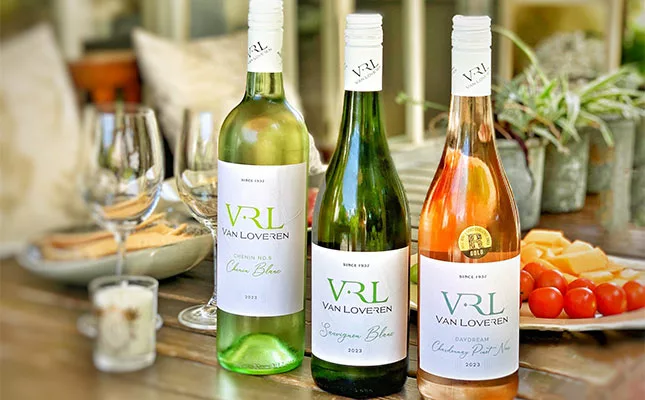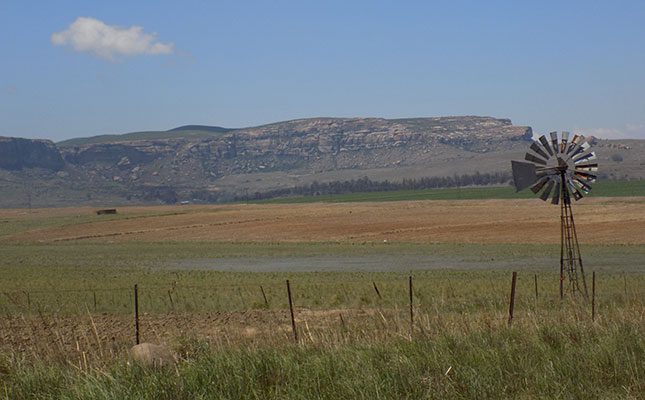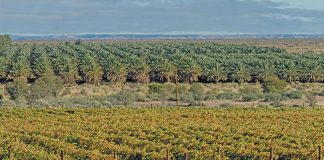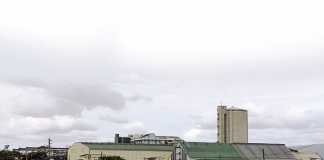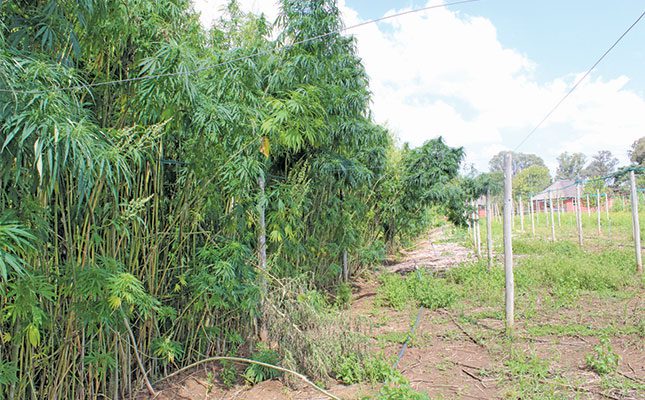
Photo: Lindi Botha
The hemp industry is ripe for development as demand is expanding with every newly discovered application for this fibre. While ample opportunity exists to grow hemp in South Africa, an underdeveloped value chain has hindered progress.
Recognising the need for a service that could assist farmers in getting started, and to provide offtake agreements and processing ability, Mahlatse Mohlala founded Green Route Hemp Industries in 2021.
“I’ve always dreamt of building a vertically integrated hemp industry. It is such a versatile crop – the hurd [woody inner stem of the plant] can be used instead of sawdust on chicken farms, and the fibre is used for everything from building material to clothing. It’s a quick and easy crop to grow and requires minimal inputs,” he says.
At the start of Mohlala’s journey, he met Chad Ferlito, who needed help in applying for a permit to grow cannabis. Mohlala warned him of the red tape he would encounter, as well as the high cost of compliance, and convinced him to grow hemp instead. Ferlito then joined Mohlala at Green Route as head of operations.
Together with Muofhe Kwinda, the company’s CEO, the trio is building an extensive value chain that will enable a mass roll-out of hemp production in South Africa.
Ferlito explains: “We want to showcase the industrial potential of hemp. If the value chain is rolled out properly, there will be real economic benefit for farmers and the country. Up until now, hemp has been largely unproven in South Africa, and the market hasn’t been willing to take a bet on it. But through the processing hubs we are creating, we aim to provide an ample, consistent supply of high-quality hemp meeting the specifications required by the market, so that they can start incorporating hemp into a range of products.”
Green Route’s processing hubs supply inputs, training, and offtake agreements for raw hemp. The hubs are able to do primary and secondary processing to provide products that are in the right format for product manufacturers. Green Route has also developed a textbook for farming hemp.
Mohlala says filling the gaps in the value chain has been essential to growing the hemp industry.
“We’re connecting markets and farmers to ensure that each farmer has access to a processor, who has access to a buyer. Until now, there have been big gaps in the value chain and farmers have struggled to find the right seed and have been unable to access processors, and the few processors there are haven’t been able to secure sufficient offtake agreements. The whole industry falls flat if these segments are not all in place,” he explains.
Farmers need a permit to grow hemp, but since it is no longer legislated under laws for cannabis, the permit process is simple and affordable, and costs less than R1 000. The permit must be renewed every three years. Applications must be done through the Department of Agriculture, and farmers need to submit the application document along with a map of the property and GPS coordinates of the farm. The property must be fenced.
While farmers previously had to obtain police clearance certificates to plant hemp, this is no longer the case.
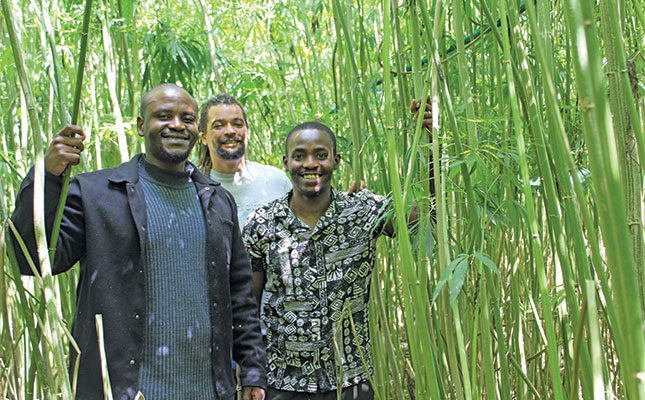
Cultivation
Hemp makes an ideal rotation crop and can be cultivated by small- and large-scale farmers. It should be planted in an open field, since it can grow up to 6m tall. While irrigation is required during dry spells or seasons, hemp has a relatively low water requirement.
Ferlito notes that while cotton requires around 9,5ℓ to 10ℓ of water to produce 1kg of fibre, hemp needs only about 2ℓ to yield the same amount.
At Green Route’s farm in Walkerville, Gauteng, hemp is grown on a 0,7ha field, where Ferlito tests different cultivation practices to find the best way forward. This crop relies solely on rain during summer, with sprinkler irrigation in winter.
Hemp delivers between 9t/ha and 12t/ha of dry raw material, which can fetch around R8 000/t.
Ferlito notes that a crucial step to a successful harvest is planting the right seed.
“When I started my research into hemp, I was told that it couldn’t be grown in the north of the country because the altitude was too high. But I found that this was because the prevailing varieties were sourced from France, where hemp is grown on the coast and therefore suited to a Mediterranean climate. These varieties work for production in the Eastern and Western Cape, but not up north,” he explains.
Green Route has since sourced varieties that are suited to northern South Africa.
“These varieties are hardy and can cope with heat and cold. Frost is not ideal, but if the plant gets sufficient sunlight during the day, it recovers quickly,” says Ferlito.
Production starts with soil preparation to ensure the pH balance is correct, at 6,5. The field must be ripped to loosen the soil to create an ideal seedbed. Seed is planted in rows, at a density that encourages the plants to grow upright and tall. Side branches must be discouraged to make it easier for processing equipment to pass through the field.
Hemp doesn’t require pesticides, further reducing input costs. Ferlito notes that while fertiliser is always a bonus to boost growth, it isn’t a necessity. “On our fields, we’ve only added kraal manure.”
Hemp has a growing cycle of up to three months, depending on the eventual application. Hemp that will only be used for hurd is ready for harvest within 60 days, with an additional month required for fibre development.
The retting process, where stalks are left on the field to dry out after being cut down, takes a further 10 to 20 days. This means farmers could get up to three harvest cycles from a field in a year.
Hemp is harvested by cutting the stalks with a bush knife or panga and laying them in the field. Once the stalks have dried to 15% moisture, the hemp can be baled and sent for processing.
Mohlala emphasises the strict quality requirements from buyers, which necessitates that incoming raw product fits exact specifications. “This is why the training process is important to ensure that farmers produce and deliver stalks that comply.”
Processing
Hemp processing requires two steps: separating the hurd from the fibre, then grading the hurd and processing the fibre to a format that can be used by mills. The hurd and fibre separation is done using a decorticator. The hurd is then broken down into various levels of coarseness, from wood chips to fine sawdust, whereas the fibre is combed.
Green Route is working towards building capacity to process 200t of raw material every three weeks. This will, however, require a massive increase in hemp production across South Africa. With the industry being fragmented and informal, it’s difficult to determine the exact number of local hemp farmers and the quantities currently produced. Mohlala notes that this has been particularly challenging in creating a formal value chain.
In dealing with farmers they’ve located, Green Route has been able to identify the main challenges preventing further expansion of this industry and work towards mitigation.
“Many of the processing facilities available have very low capacity, and they want product that has already been processed to some extent. Farmers don’t have the ability to do the first level of processing, so there has been a big gap between them and buyers. Processors need to be able to take in raw product from farmers that arrives in any state and then get it ready for the market,” says Ferlito.
Green Route is developing a hub model whereby mobile primary processing facilities can be transported to any region in South Africa where there is a concentration of hemp farmers. This means farmers wouldn’t need to transport bulky raw material over long distances at a cost that eliminates profits.
The hubs will do primary processing so that semi-processed, compressed bales can then be transported to larger, centralised hubs where secondary processing can be done.
Awakening the market
While applications for hemp are myriad, the South Africa industry is currently caught in a chicken-egg scenario. The market requires large, consistent volumes of hemp before investing in product development, but farmers require market assurance before they start producing. In the middle are the processors who require certainty around supply and demand before they can lay down and secure investment.
Mohlala notes that for Green Route, an important step in developing the value chain was first speaking to clothing retailers to understand what their requirements are in terms of hemp fibre.
“We then worked backwards to ensure our processing methods could provide product in the specification they required, and that farmers could provide the quality of raw material in a format the processing facilities can handle,” he says.
He adds that South Africa has the farming capacity to fulfil the desired market volumes, but it is a matter of teaching farmers how to farm hemp and encouraging them to do so.
“Farmers have been hesitant because processing capacity and markets were lacking. To get the whole value chain functioning optimally and have economies of scale work in everyone’s favour, we need around 2 500ha planted to hemp.”
Meeting buyer specifications is not a one-size-fits-all approach since different industries have their own needs, and different products require unique levels of pre-processing.
Hurd can be used by chicken farmers instead of sawdust, as reinforcement material in composites, in fibre boards, and hempcrete bricks. Ferlito relates that replacing sawdust with hurd on chicken farms is proving particularly popular, since sawdust can create respiratory problems for chickens, while hurd doesn’t.
Hemp fibre has two markets: knitted fabrics and non-woven textiles. The fibres are spun to produce cotton-like strands and fabrics, which can be blended with cotton to make clothing or linen. The thicker, coarser fibres are used to create mats, ropes, conveyor belts, and heavy industrial textiles.

Ferlito says there is particularly high demand for hemp products in China, Europe, and the US.
“South Africa has a growing demand but currently imports most of its hemp textiles. If South Africa can reach its full potential in terms of hemp textile production, we can not only serve our own market but also export.
“We have everything counting in our favour – climate, competent farmers, land, and geographic location. The fact that we are not already a global hemp powerhouse is our fault.”
While Green Route believes they have solved the conundrum that has held back the hemp industry, they now need the right players to scale production and development.
“We need the right funding partner that can help us develop this value chain, and farmers who have access to large tracts of land to provide the raw material. I think we’ve shown that there’s a lot to be achieved in terms of economic development for the country if we can get this industry functioning optimally,” says Mohlala.
For more information email Green Route Hemp Industries at [email protected].






